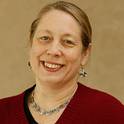
Contribution to Book
“She Appears as Brightly Radiant as She Once was Foul”: Medieval Conversion Narratives and Contemporary Makeover Shows
Cultural Studies of the Modern Middle Ages
(2007)
Abstract
On the surface of things—which is where a good portion of this inquiry takes place, although perhaps not in the same sense as the introductory phrase implies—a medieval conversion narrative and a contemporary makeover show appear to have so little in common as to be strange bedfellows. However, it is exactly at the surface, or perhaps in their understanding of the surface, that they are inextricably linked. Concerned with transformations—“the word [conversion] itself comes from a Latin word that means to change or transform one thing into another”1—both genres employ substantially similar rhetoric to reach the same goals. A process as well as an event, conversion and makeovers both work in two directions, from society inward and from the individual outward. For those in need of change (‘need’ being a fairly loosely defined term), social assumptions and conventions provide the models and options for conversion, and the transformation takes place on the body and in the mind of the individual, who then returns to society in a different place. If Hrotsvit of Gandersheim’s dramas are rarely considered in the same breath as the Learning Channel’s What Not To Wear, they—as well as many of their medieval and modern analogues—offer surprisingly similar goals, played out on the surface in unsuperficial ways.
Keywords
- Civilization,
- Medieval,
- Medieval influences,
- Modern,
- Literature,
- Medievalism,
- Politics and government
Disciplines
- Aesthetics,
- History and
- Rhetoric
Publication Date
2007
Editor
Eileen A. Joy
Publisher
Palgrave Macmillan
Series
The New Middle Ages
ISBN
9781403973078
DOI
10.1057/9780230610040_3
Citation Information
Angela Jane Weisl. "“She Appears as Brightly Radiant as She Once was Foul”: Medieval Conversion Narratives and Contemporary Makeover Shows" New YorkCultural Studies of the Modern Middle Ages (2007) p. 47 - 61 Available at: http://works.bepress.com/angela-weisl/17/
